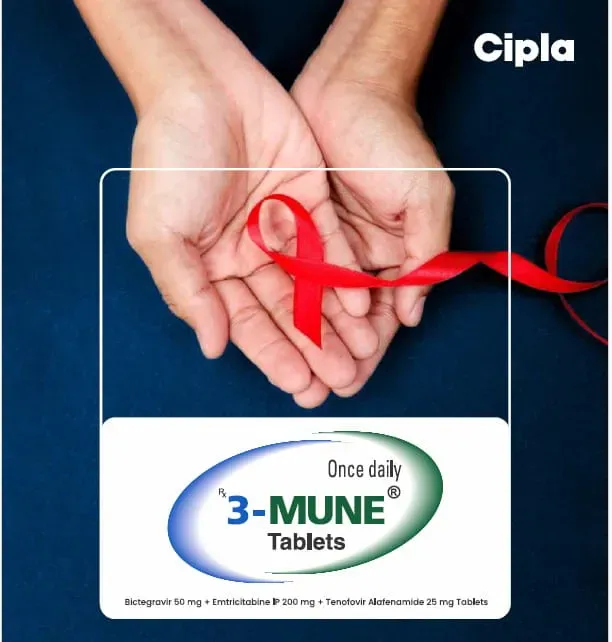AIDS 2024: Tenofovir-diphosphate Concentrations and Viral Suppression following Monthly Point-of-care Urine Tenofovir Testing among Adults initiating Antiretroviral Therapy Primary Outcome of the Randomised Control Trial
Speaker: Nigel Garrett
South Africa currently does not meet the 95-95-95 target, with an estimate of approximately 94-77-92 according to the Department of Health. Challenges with Anti-retroviral therapy (ART) adherence and efficient Human Immunodeficiency Virus (HIV) viral load testing persist in many resource-limited settings. The previous Simplifying Treatment and Monitoring for HIV (STREAM) trial successfully demonstrated that point-of-care viral load testing combined with task shifting to lower cadres improved HIV outcomes among patients established and stable on ART. The urine tenofovir lateral flow assay, a simple and accurate test detecting adherence over the previous four days, showed utility among viremic people living with HIV in some settings. The STREAM trial aimed to determine if integrating point-of-care tenofovir adherence testing with point-of-care viral load monitoring would improve ART adherence, viral suppression, and retention in care among individuals initiating first-line tenofovir-based ART in South Africa. In the first 24 weeks, the trial evaluated whether monthly urine tenofovir testing among those starting ART could enhance adherence. The two clinical research sites were in Durban and North Pietermaritzburg in KwaZulu-Natal, South Africa.
The STREAM HIV trial was an open-label, two-arm, randomized controlled trial conducted at three public clinics in KwaZulu-Natal, South Africa. The trial aimed to enroll 540 people living with HIV initiating tenofovir-based first-line ART. Participants in the intervention arm received monthly point-of-care urine tenofovir testing with immediate adherence counseling, while those in the control arm received monthly adherence counseling without urine testing. Study endpoints included tenofovir diphosphate levels, retention in care, and viral suppression at 24 weeks. Once enrolled and randomized, participants in the intervention arm received monthly urine tenofovir testing until the six-month ART adherence endpoint, after which the test was used reflexively for those who tested viremic on the point-of-care viral load assay. Positive tenofovir urine tests led to reflex resistance testing, with the primary outcome assessed at 18 months. Eligibility included individuals aged 16 or older starting tenofovir-based ART. HIV care followed South African ART guidelines, with monthly clinic visits until six months on ART, then every two months, and viral load testing at months 6, 12, and annually. Community-based ART delivery was considered once participants were stable on ART for 12 months.
The primary outcome was tenofovir diphosphate concentration in dry blood spots as a long-term adherence metric. Secondary outcomes at 24 weeks included retention in care and viral suppression. Tenofovir diphosphate concentrations were measured using mass spectrometry, and viral loads were assessed with the Alinity assay. Retention was defined as attending the week 24 visit within a specified window. Of the 540 enrolled and randomized participants, 539 initiated ART between February 2021 and June 2023, despite COVID-19 disruptions. At week 24, 242 intervention and 234 control participants had available samples for testing. The cohort was 59% female, with a mean age of 33, a mean clusters of differentiation 4 (CD4) count of 390, a mean viral load of 38,000, and 5.8 percent with active tuberculosis (TB). The intervention fidelity was high, with 98 percent of tenofovir urine tests administered during months 1 to 5.
At 24 weeks, the geometric mean of tenofovir diphosphate concentration was slightly higher in the intervention arm but not statistically significant. However, more participants in the intervention arm achieved detectable tenofovir levels. Retention in care, viral suppression, and the composite endpoint of retention and suppression were also slightly higher in the intervention arm but did not reach statistical significance. The diagram showed that despite no overall impact on mean tenofovir diphosphate levels, monthly point-of-care testing led to more participants achieving detectable levels in the intervention arm. Among the 18 participants with detectable tenofovir levels and viremia at 24 weeks, 16 experienced a viral load drop of more than 10,000 copies.
This was the first multicenter, randomized controlled trial to evaluate routine tenofovir testing among people living with HIV initiating ART. The study was an open-label trial, with the research team blinded to data by study arms, ensuring fair comparison. Both intervention and control arm participants received care from the research team. Adherence, viral suppression, and retention may have been higher than in public healthcare settings. Modest study reimbursement, provided equally to both arms, might have slightly increased retention in care.
In conclusion, among South African participants initiating tenofovir-based ART, overall adherence and viral suppression were high at 24 weeks. Monthly point-of-care urine tenofovir testing did not increase mean tenofovir concentrations, retention in care, or viral suppression compared to the control. However, more participants in the intervention arm achieved detectable tenofovir diphosphate concentrations. The impact on longer-term HIV outcomes will be assessed further, and the combined effect of urine tenofovir testing with point-of-care viral testing will be evaluated at 72 weeks.
The 25th International AIDS conference (AIDS 2024). 22nd-26th July, Munich, Germany



